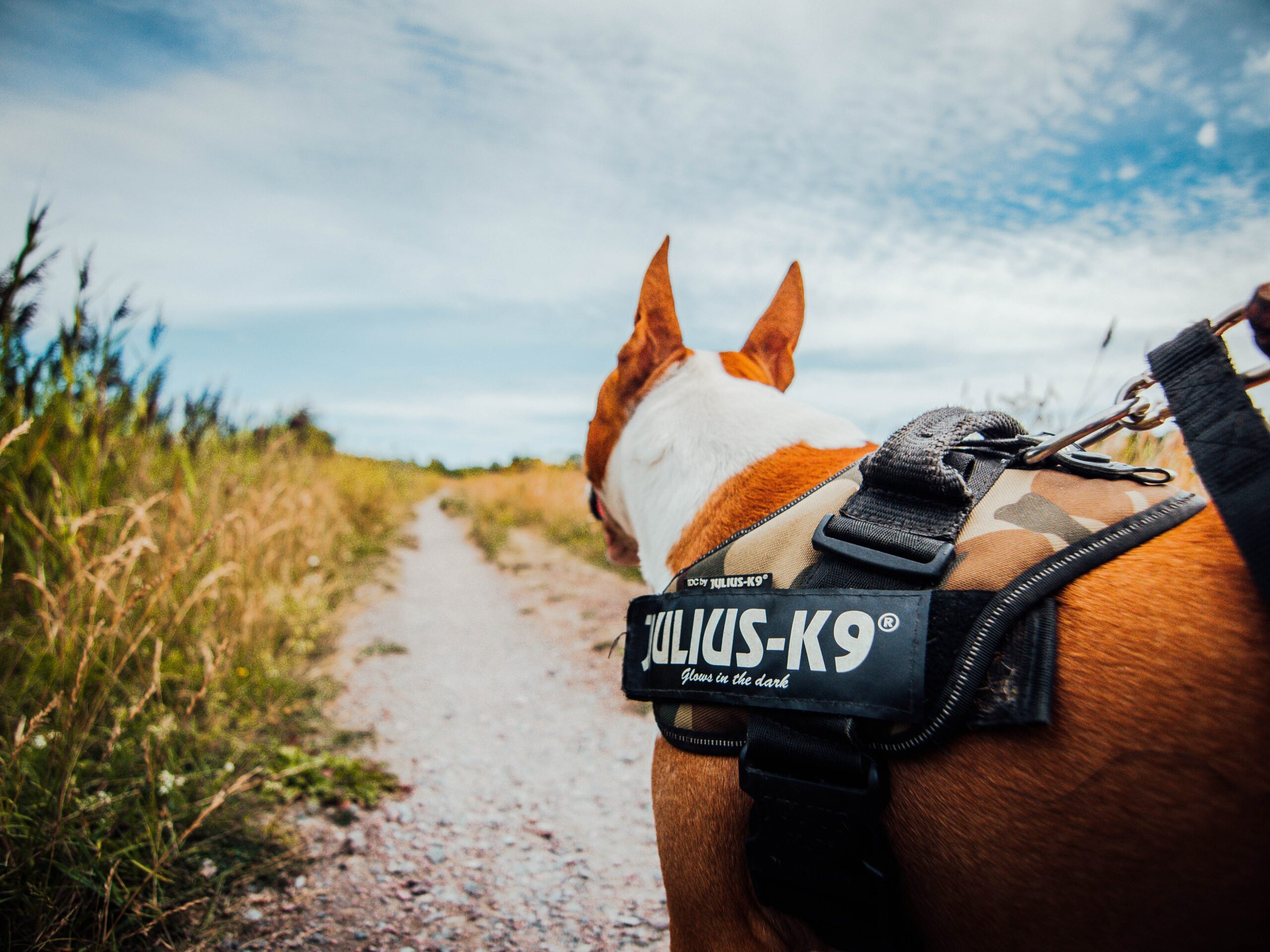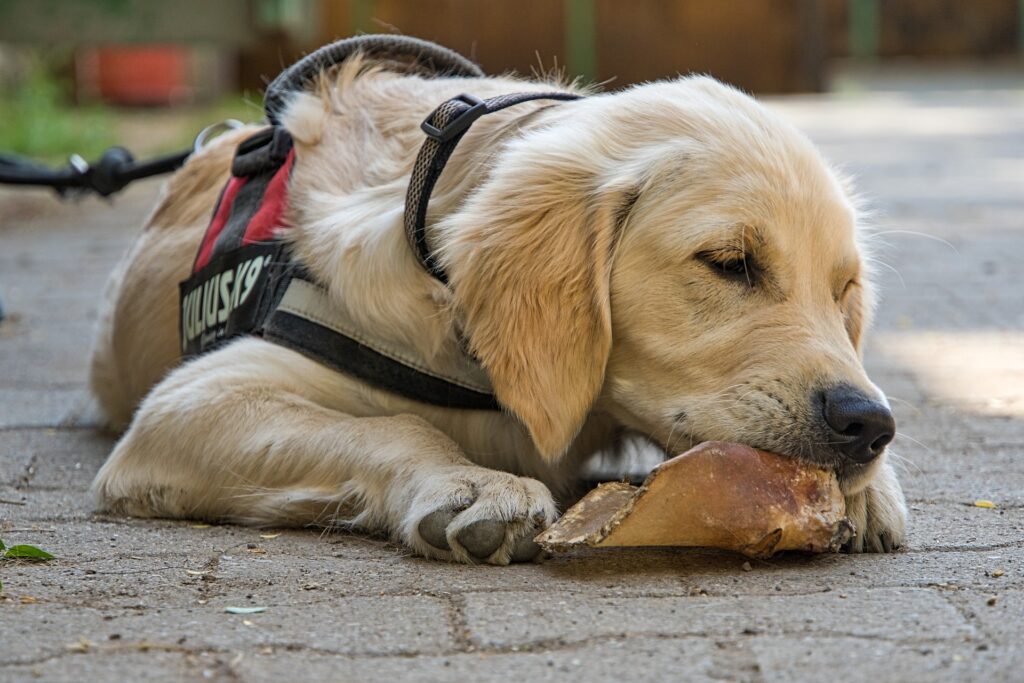Have you ever gone to the pet store and gotten overwhelmed by the different types of dog harnesses? If so, you’re not alone. Knowing which is suitable for your pup can be challenging with all the other options. But never fear! This guide will help you figure out which type of harness is best for your dog based on its individual needs. Read on to learn more!
5 Types Of Dog Harnesses
Front Clip Dog Harness:
The front clip harness is popular because it offers more control than other dog harnesses. The lead attachment point is located at the front of the chest, so you can steer your dog in the direction you want him to go.
This type of harness is also better for dogs who pull on the leash or are still learning not to lunge at other dogs or people. In addition, the front clip harness is generally more comfortable for dogs to wear than different harnesses.
Another reason the front clip harness is so popular is that it is available in various sizes and styles. Front clip harnesses are available for dogs, from small to large breeds. And there are many different colors and patterns to choose from, so you can find one that suits your dog’s personality perfectly.
Read More: How Long Can You Leave A Harness On A Cat?
Back Clip Harness:
A back clip harness is excellent for well-trained dogs who walk calmly by your side. The lead attachment point is at the back of the dog’s chest, which helps prevent your dog from pulling on the leash attachment.
This type of harness is also a good choice for smaller dogs who a front clip harness may overpower. The back clip harness is easy to use and is comfortable for your dog to wear. It’s also adjustable so that you can find the perfect fit for your dog.
When using a back clip harness, please pay close attention to your dog’s body language and monitor their interactions with other dogs. If you notice any signs of stress or anxiety, remove the harness and consult with a trainer or behaviorist.

Read More: How To Harness A Cat For Grooming?
Dual Clip Dog Harness:
The dual clip dog harnesses combine a front and back clip harness, with lead attachment points at both the front and back of the chest. This gives the owner more flexibility in how they use it, as it can be best suited for dogs who need extra control while out on walks (such as those who pull or lunge) but can also be used with well-behaved dogs as an added measure of safety.
These dual clip harnesses consist of two main parts: the body of the harness, which goes around the dog’s chest and shoulders, and the lead, which attaches to the front or back of the harness. Lead can be made from various materials, such as leather, nylon, or chains. The lead length will depend on the size of the dog and the owner’s preference.
The dual clip harness is easy to put on and take off and can be adjusted to fit a wide range of dog sizes. It is important to ensure that the harness is not too loose or tight, as this can cause discomfort or injury. When appropriately used, a dual clip harness can be a great way to provide extra control and safety for your dog while out on walks.
Read More: How Do Cat Harnesses Fit?
Dog Head Halter:
A head halter is precisely what it sounds like – a strap that goes around your dog’s head, similar to those used on horses. This type of halter gives you more control over your dog’s movement than a traditional collar or even a standard harness since it allows you to easily redirect their gaze (and, therefore, their body).
Head halters are an excellent choice for strong pullers dogs or easily distracted by outside stimuli when walking on a leash. While some dog owners may feel that using a head halter is too restrictive or punitive, when used correctly, head halters can provide a gentle way to help your dog learn how to walk calmly on a leash.
There are many different types and brands of head halters on the market, so it’s important to do your research to find one that will be comfortable for your dog to wear. Consult your veterinarian or a professional dog trainer before using a head halter. They can help you determine if this restraint is appropriate for your dog and teach you how to use it properly.
Read More: Is It Too Late To Harness Train My Cat?

Tightening Dog Harness:
A tightening dog harness is a specialized type commonly used with high-energy dogs or those requiring extra control.
The key difference between a tightening dog harness and a standard harness is the presence of a mechanism that allows the straps to be tightened around the dog’s body if they attempt to pull away. This type of harness is typically made from durable materials such as nylon or polyester and is equipped with sturdy D-rings for attaching a leash.
Some models also include reflective strips for added safety during nighttime walks. When fitting a tightening dog harness, it is important to adjust the straps, so they are snug but not too tight. Behind the dog’s front legs, the chest strap should sit high on the chest, and the belly strap should sit just behind the rib cage.
In most cases, a tightening dog harness will have one attachment point on the back, although some models may have two. Once the harness is in place, it should be tested by walking your dog on a leash to see if it can comfortably move and breathe while wearing it.
If the harness is too loose, it may ride up and cause chafing or discomfort; if it is too tight, it can restrict your dog’s movement and make it difficult for them to pant or take deep breaths. When used correctly, a tightening dog harness can be an effective tool for managing an energetic or strong-willed dog.
However, it is important to remember that this type of harness should only be used as a last resort after all other training methods have failed. Continued use of a tightening dog harness can damage your bond with your pet and lead to further behavioral issues.
Read More: What Is The Difference Between Cat And Puppy Harness?
Conclusion
With so many dogs harnesses available on the market today, it can be hard to know which one is right for your pup. However, by considering your dog’s individual needs and preferences, you can narrow down the field and choose the perfect type of harness for them! Whether you opt for a standard design or something more specialized like a vest or head halter, make sure to take your time and find the perfect fit for your furry friend!
Read More: Are Cat And Dog Harnesses Different?












